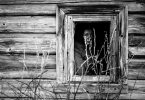Your digital genealogy can easily become just as tangled a maze as your collection of physical genealogy documents if you are not diligent about keeping it in order. You don’t want to be searching high and low all through your computer’s hard drive for a scan of a document, a photo, or any other important piece of genealogical information. You need it all in one place, and organized in a simple, easy to use way, so the information you need is always quite literally at your fingertips.
Here are some tried and true tips to help you get to that beautiful happy space of digital genealogical tidiness.
Make a New Desktop Folder for Each Individual Family Surname
You will put any old or new genealogical information regarding this family in this folder. As a general rule, women start out being included in their birth family’s folder, then are moved to their married surname’s folder after they marry. If she never marries, she stays in her birth family’s folder. If she marries more than once, she can be moved to the appropriate folder after each marriage.
Make Individual Folders for Different Types of Documents or Other Genealogical Info
These individual folders will go inside the primary surname folder, and your computer should automatically alphabetize the interior folders for you. You can make folders for all kinds of things, such as birth information, death information, marriage information (this can have a copy in both the maiden name and married name folders for married women), property information, land deeds, tax information, wills, census records, scans from genealogy books with your family history in it, old photos, and anything else you can think of that needs its own folder.
Make File Names with the Dates First, So They Will Appear in Chronological Order
Whenever you include a document or other piece of genealogical information in an individual folder inside a surname folder, be sure to name the file with the date the information in the folder was created (not obtained by you). Your computer will automatically organize the files in chronological order, so you can find the oldest documents first, and the newest ones last, and anything in between with ease.
Include Folders for Branches of the Family in the Primary Surname Folder
You will come across branches of your family that do not connect with your direct one until way back in history. If you are keeping track of these collateral relatives (and you should be), then each branch of the family off of the common ancestor you all share should have its own folder within the primary surname folder. Put the same kind of information in these collateral line folders as in your direct line folders, and name the files the same way. You will be able to find an ancestor, no matter how distant and removed from your common ancestor, in an instant.
Make One Large Genealogy Folder and Put it On Your Computer’s Desktop
In this folder, you will put all the surname folders (and the information within them). Put it on your computer’s desktop, and you have a simple and effective digital genealogy archive that anyone can use and understand.






